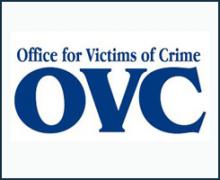Response to violence
TeleSAFE Toolkit: A Step-by-Step Guide to a Trauma-Informed Program
Focused Deterrence, Strategic Management, and Effective Gun Violence Prevention
Focused Deterrence, Strategic Management, and Effective Gun Violence Prevention
It's Not all or Nothing: Women's Differential Use of Help-Seeking Strategies in Response to Intimate Partner Violence
Assessing the Impact of an Innovative Response to Intimate Partner Violence Related Strangulation, Process Evaluation
Assessing the Impact of an Innovative Response to Intimate Partner Violence Related Strangulation, Final Report & Outcome Evaluation
Tools to Support Campus Sexual Assault Prevention and Response
Special Feature: Domestic Violence
Special Feature: Gangs
Too Sensitive or Not Sensitive Enough? Sensitivity to Context and Justice-involved Youths' Response to Violence Exposure
Too Sensitive or Not Sensitive Enough? Sensitivity to Context and Justice-involved Youths' Response to Violence Exposure
Tools to Support Campus Sexual Assault Prevention and Response
Battered Women’s Multitude of Needs: Evidence Supporting the Need for Comprehensive Advocacy
Battered Women’s Multitude of Needs: Evidence Supporting the Need for Comprehensive Advocacy
Tribal Crime, Justice, and Safety (Part 1)
Research indicates that Native American persons experience crime victimization at higher rates than non-Native people. Furthermore, the unique position of American Indian and Alaska Native tribes as both sovereign nations and domestic dependents of the U.S. creates jurisdictional complexities in responding to crime, justice, and safety. Senior social and behavioral scientist Christine (Tina) Crossland discusses NIJ’s research on these topics, especially on the prevention of violence towards American Indians and Alaska Natives. Communications Assistant Stacy Lee Reynolds hosts.







